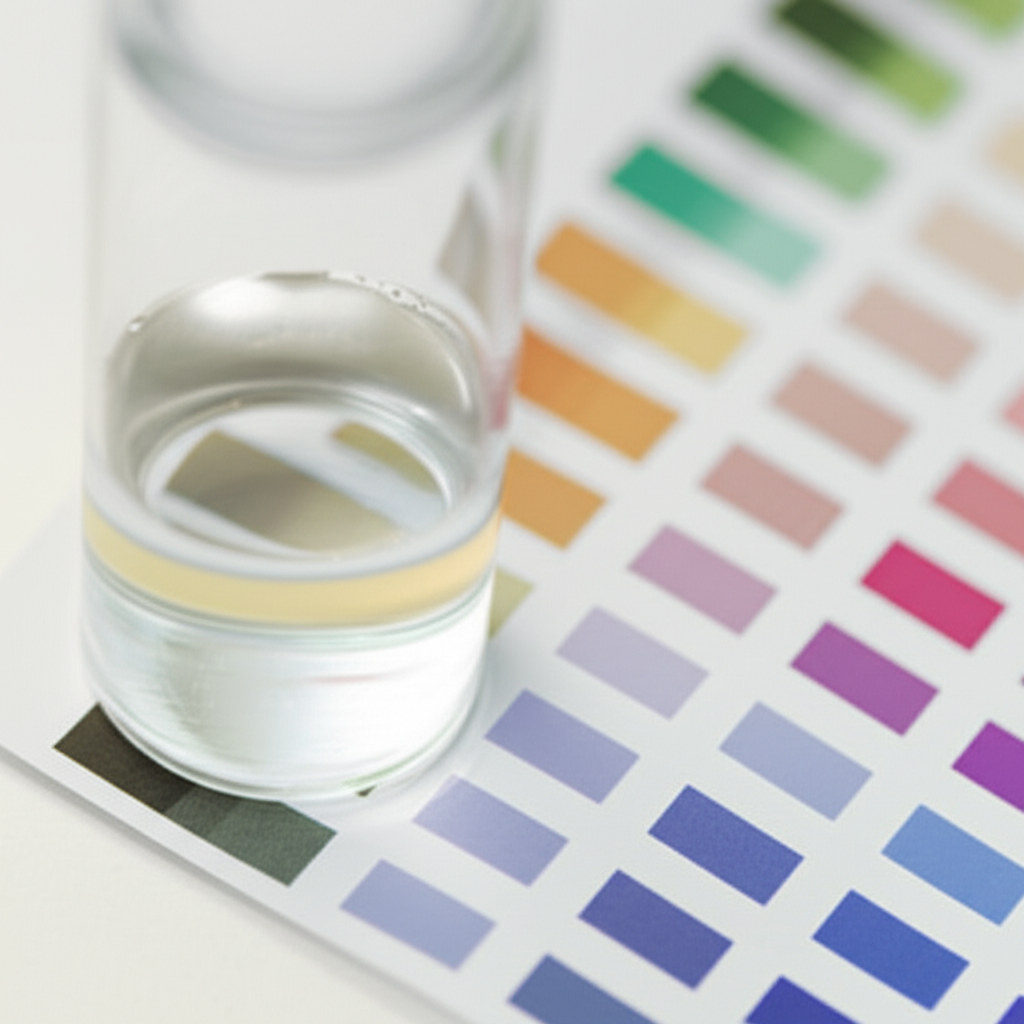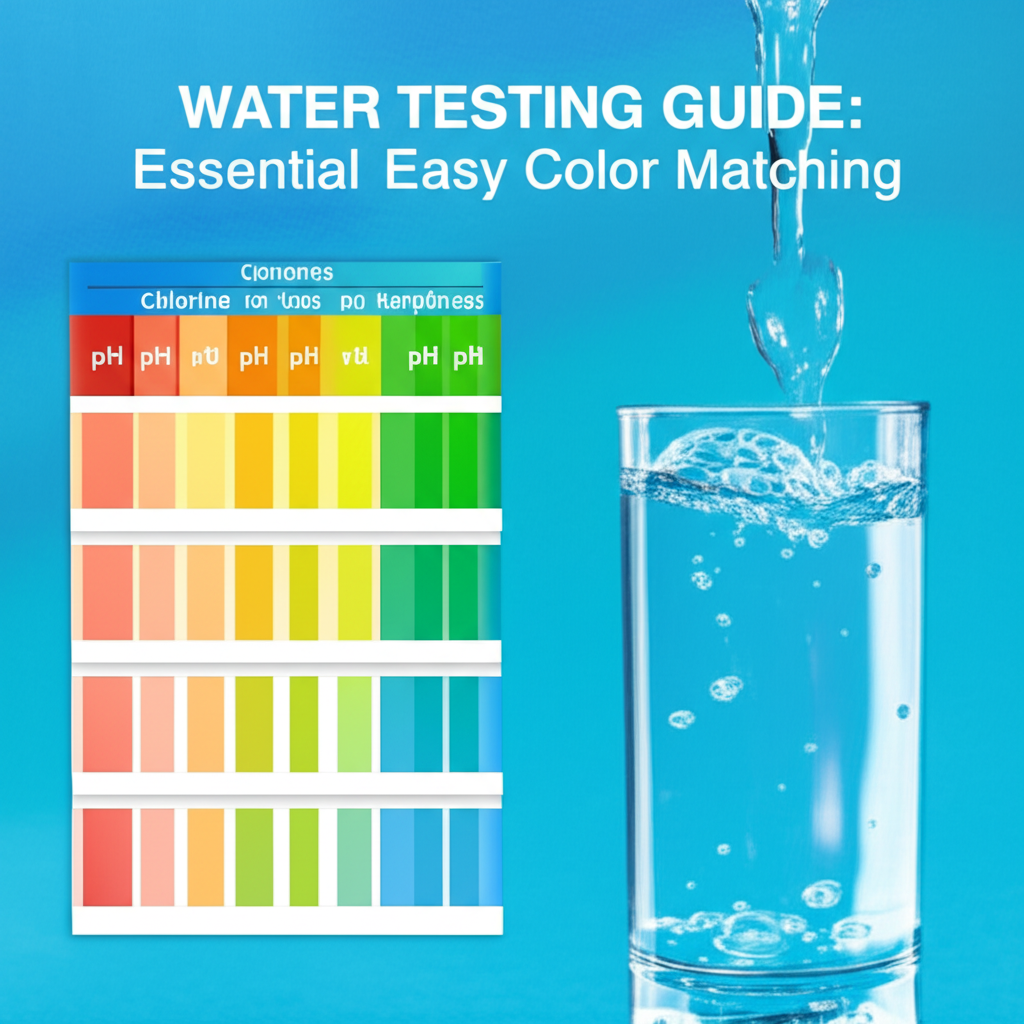- Why Is Water Testing Non-Negotiable?
- Key Water Parameters You Can Test
- The Simplicity of Easy Color Matching
- Mastering Easy Color Matching for Accurate Results
- Interpreting Your Easy Color Matching Results
- Beyond the Basics: When to Seek Professional Testing
Water Testing Guide: Ensuring the purity and safety of your water supply is paramount, whether it comes from a municipal source, a private well, or even a recreational pool. While complex laboratory analyses provide exhaustive detail, the accessible and widely used method of color matching allows for quick, reliable, and essential on-the-spot assessments. This approach simplifies the often-intimidating world of water chemistry, empowering homeowners and facility managers alike to monitor key parameters with confidence. This guide will walk you through the fundamentals of water testing, spotlighting the effectiveness and critical role of easy color matching techniques in maintaining optimal water quality.
Why Is Water Testing Non-Negotiable?
Our water interacts with countless variables before it reaches our tap or pool. From environmental contaminants and agricultural runoff getting into well water, to aging infrastructure leaching unwanted substances into municipal supplies, or even simply maintaining the right balance for recreational use, regular monitoring is crucial. Neglecting water testing can lead to a host of problems:
Health Concerns: Contaminants like bacteria, heavy metals, or high levels of nitrates can pose serious health risks, particularly to vulnerable populations such as children and the elderly.
Appliance Damage: Hard water, characterized by high mineral content (calcium and magnesium), can cause scale buildup in pipes and appliances, reducing their efficiency and lifespan.
Unpleasant Odor and Taste: Imbalances in pH, chlorine levels, or the presence of certain minerals can negatively impact the aesthetic qualities of water, making it less appealing for drinking or bathing.
Environmental Impact: Discharging untreated or improperly managed water can harm local ecosystems.
Chlorine Management (Pools/Spas): For recreational water, incorrect chlorine levels can lead to skin and eye irritation, and ineffective sanitation, allowing harmful pathogens to thrive.
Regular testing acts as an early warning system, allowing you to identify potential issues before they escalate, protecting your health, your home, and your investments.
Key Water Parameters You Can Test
A comprehensive water testing guide typically covers numerous parameters, but for routine monitoring, several stand out as most important and are readily identifiable through color matching methods:
pH: Measures the acidity or alkalinity of water (0-14 scale, 7 is neutral). Ideal drinking water is generally between 6.5 and 8.5.
Total Hardness: Indicates the concentration of dissolved minerals like calcium and magnesium, which contribute to scale buildup.
Total Chlorine/Free Chlorine: Essential for knowing if sanitation levels are adequate in treated water (pools, municipal supplies) and if there’s residual germ-killing power.
Alkalinity: Measures the water’s ability to resist changes in pH. Important for stability in pools.
Nitrates/Nitrites: Potential indicators of agricultural runoff or septic system contamination, especially in well water.
Iron/Copper: Can cause staining, metallic taste, and indicate pipe corrosion.
The Simplicity of Easy Color Matching
The core principle behind easy color matching in water testing kits is straightforward chemistry. A small amount of your water sample is exposed to a specific chemical reagent, or a reagent is embedded in a test strip. This reagent reacts with the target substance (e.g., chlorine, pH indicators, hardness ions) in your water, producing a distinct color change. The intensity or hue of this color is directly proportional to the concentration of the substance being tested.
Once the color develops, you simply compare it to a standardized color chart provided with the test kit. Each shade on the chart corresponds to a specific concentration level. This visual comparison makes it an incredibly user-friendly and intuitive method, requiring no complex instruments or specialized training.
Mastering Easy Color Matching for Accurate Results
Achieving reliable results with color matching kits is simple, but precision matters. Follow these steps for optimal accuracy:
1. Gather Your Sample: Collect a fresh water sample in a clean container (usually provided with the kit or a dedicated clean glass). For tap water, let it run for a minute or two before collecting. For well water, collect directly from the tap furthest from your pressure tank.
2. Read Instructions Carefully: Every kit is slightly different. Pay close attention to the specific instructions for your chosen test, including required water volume, reagent drops, and waiting times.
3. Perform the Test:
Test Strips: Dip the strip into the water sample for the specified duration (usually 1-2 seconds), remove without shaking off excess, and wait the instructed development time.
Liquid Reagents: Add the exact number of drops of each reagent to the water sample in the test vial, cap, and gently invert (do not shake vigorously unless instructed) to mix. Wait the recommended development time.
4. Compare Colors: Hold the test strip or vial against the white background of the provided color chart in good, natural light. Do not use artificial light sources that can alter color perception. Match the color of your sample as closely as possible to the chart.
5. Record Results: Note down your findings immediately. This creates a valuable log for tracking changes over time.
Tips for Enhanced Accuracy:
Good Lighting: Natural daylight is best for color comparison. Avoid direct sunlight or dim conditions.
Timing is Everything: Adhere strictly to the recommended waiting times. Too short, and the color won’t fully develop; too long, and it might fade or change unnaturally.
Fresh Reagents/Strips: Chemical reagents and test strips have expiration dates. Using expired products can lead to inaccurate readings. Store them in a cool, dry place away from direct sunlight.
No Contamination: Prevent cross-contamination between reagents or from dirty containers.
Interpreting Your Easy Color Matching Results
Once you’ve matched the color and obtained a reading, the next step is interpretation. Your kit’s instructions will usually provide guidance on acceptable ranges for each parameter.
pH: If it’s too high or too low, it can indicate pipe corrosion or impact sanitation effectiveness.
High Hardness: Expect more soap scum, scale buildup, and potentially reduced appliance lifespan.
Chlorine Levels: For pools, aim for a specific range to ensure sanitation. For drinking water, a slight residual is good, but too high can affect taste.
* Nitrates/Nitrites: Any detectable level in drinking water, especially private wells, warrants further investigation, as high levels can be dangerous.
Should your results fall outside the recommended ranges, it’s a sign to take action. This might involve adjusting chemical dosages (for pools), installing filtration systems, or consulting with a water quality professional.
Beyond the Basics: When to Seek Professional Testing
While easy color matching kits are incredibly valuable for routine monitoring and provide a reliable water testing guide for common issues, they have limitations. They typically test for a select number of parameters and offer results within a certain range of accuracy.
For a more exhaustive analysis, especially if you suspect less common contaminants (e.g., lead, pesticides, specific bacteria like E. coli), or if you’re dealing with persistent issues despite your efforts, professional laboratory testing is indispensable. These labs use advanced instrumentation to detect a much broader spectrum of substances at extremely low concentrations, providing a definitive diagnosis of your water quality.
In conclusion, regularly testing your water is a fundamental aspect of health and home maintenance. Thanks to the accessibility and effectiveness of color matching techniques, this essential task doesn’t have to be complicated. By understanding the basics, following simple instructions, and correctly interpreting your results, you empower yourself to ensure the water you depend on is clean, safe, and balanced, day in and day out.




